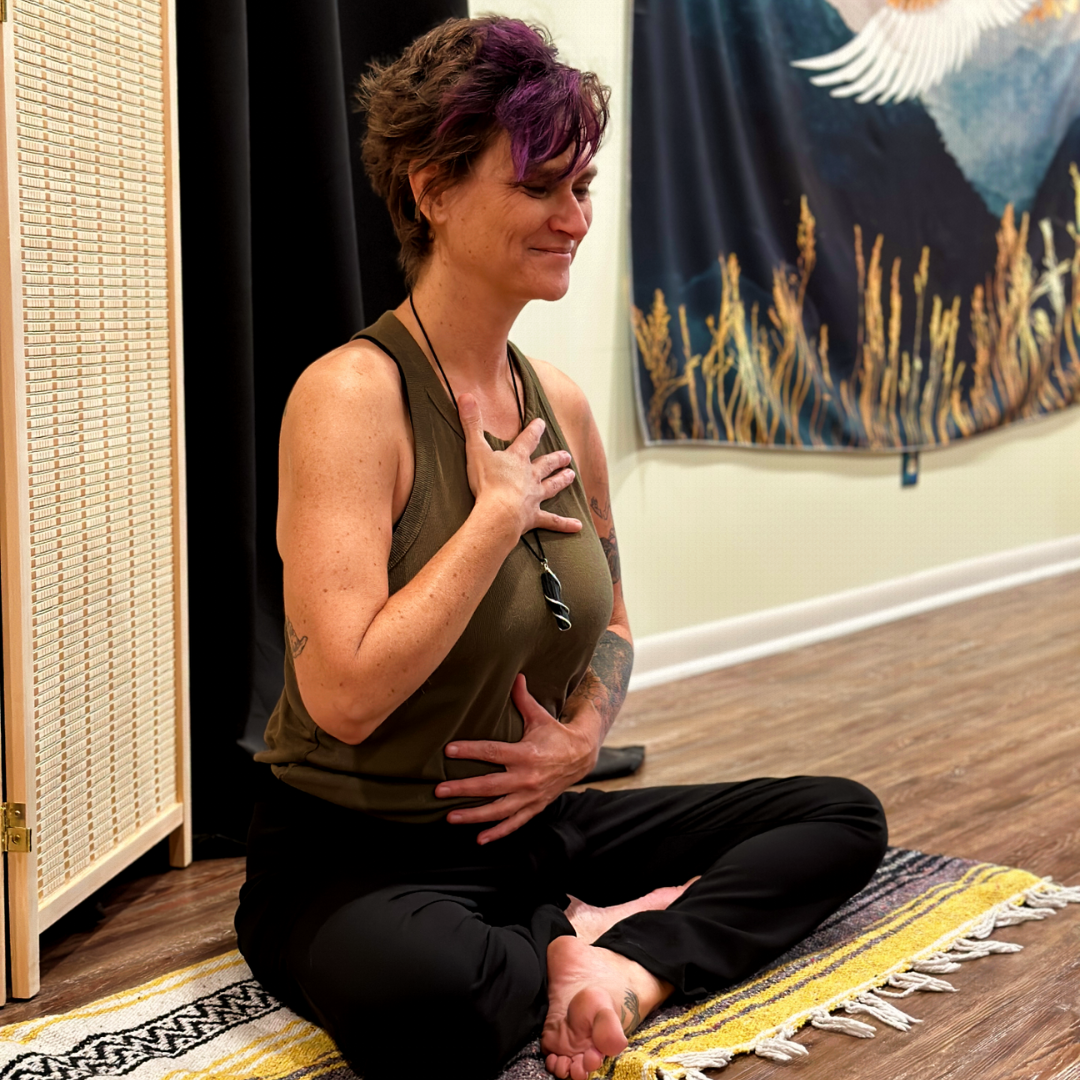Qigong is described by the National Qigong Association as, “a mind-body-spirit practice that improves one’s mental and physical health by integrating posture, movement, breathing technique, self-massage, sound, and focused intent.” I have found that I have begun to experience the true benefits of Qigong by integrating practices into my daily life. For personal healing and transformation, self-cultivation of Qi is key and having a daily practice a 20-45 minute Qigong workout is ideal, however engaging in any sort of practice for even a few minutes stills serves you on your healing path. In this article, I’d like to share with you the three Qigong practices that I use every day.
Practice #1: Abdominal Breathing
I know I have mentioned before that a portion of my youth was spent working with vocal coaches. During that time, we learned how to breathe from our bellies. This skillset proved particularly helpful when singing, speaking but also when I was navigating my asthma diagnosis.
Abdominal breathing also known as Diaphragmatic breathing has several benefits. According to Healthline, this type of breathing can:
- Helps you relax by lowering the harmful effects of the stress hormone cortisol
- Lower your heart rate
- Helps lower your blood pressure
- Slow your rate of breathing so that it expends less energy
- Increase the amount of oxygen you breathe into your body
For me, the most important of these benefits is the stress management piece. Throughout my day when I feel overwhelmed or start to have anxiety, my go-to is Abdominal Breathing. This breathing technique is the foundation for Qigong because it slows us down and ensures that we are taking inadequate oxygen to maximize our Qi cultivation practice. Throughout my day, this practice takes minutes and is completed several times, my personal go is to make Abdominal Breathing my natural breathing state.
If you’re interested in getting started I recommend using the time you find yourself driving. Obviously you cannot close your eyes and you really shouldn’t put your hands on your belly. But, you can practice Abdominal Breathing. In the car, I focus on deep belly breaths, attempting to make each one longer and slower.
Practice #2: Healing Sounds
Yes, the idea of making specific sounds to release emotions sounds silly. However, once you experience the internal vibration and release, it’s hard to deny the benefits. When I was first introduced to the concept of healing sounds, I was skeptical. My teacher told me that it would change my life and I smiled and nodded. Being a good student I engaged in a healing sound practice daily for weeks and it changed my life. Now, let me be clear, my life is not perfect but it helped to move stagnant Qi that had been stuck for ages. The removal of these emotional blocks made way for a new level of inner growth and personal development.
Daily, I still utilize these healing sounds to release emotions as they occur at the moment. I also use the complementary visualization exercise of filling whatever organ I am purging with a color. These sounds can be done by screaming, speaking or in silence, each volume resonates within us differently and purges our physical, emotional and spiritual body.
Therefore, if you are ever around me and you see me close my eyes, take a deep breath in and exhale out with a sound that sounds peculiar, there’s a 95% chance you just witnessed me doing a healing sound. The funny thing is, there are so many people that have been in my presence as I practice healing sounds, however, what I found is that most of us are so caught up in our own lives that we rarely notice the lady make peculiar sounds. The only exception to this would be my family, but in my home, I practice healing sounds and there are really no limitations when it comes to volume.
Practice #3: Wuji Posture
Wuji Posture in Qigong is a standing meditation posture. The Chinese word Wuji means infinite and posture is designed to put us in a stance of least resistance. It is an ideal posture for self-cultivation and allows you to breathe Qi into the body from the earth and fill your Lower Dantian, which is basically your personal reservoir of energy.
This standing posture is one that I typically engage in throughout the day. It’s not uncommon to see me do a modified posture while waiting in a line. I will also typically take breaks throughout the day and engage in this posture for 5-10 minutes when my energy is feeling low.
If interested in learning more about this posture, check out this Youtube video.
Those are my three daily Qigong practices. If anything, perhaps it helps enlighten to those of you that have pondered from afar what I was doing randomly throughout my day. Despite how random they may seem, these simple practices facilitate needed energetic shifts that allow me to function at my best.
Sincerely,







